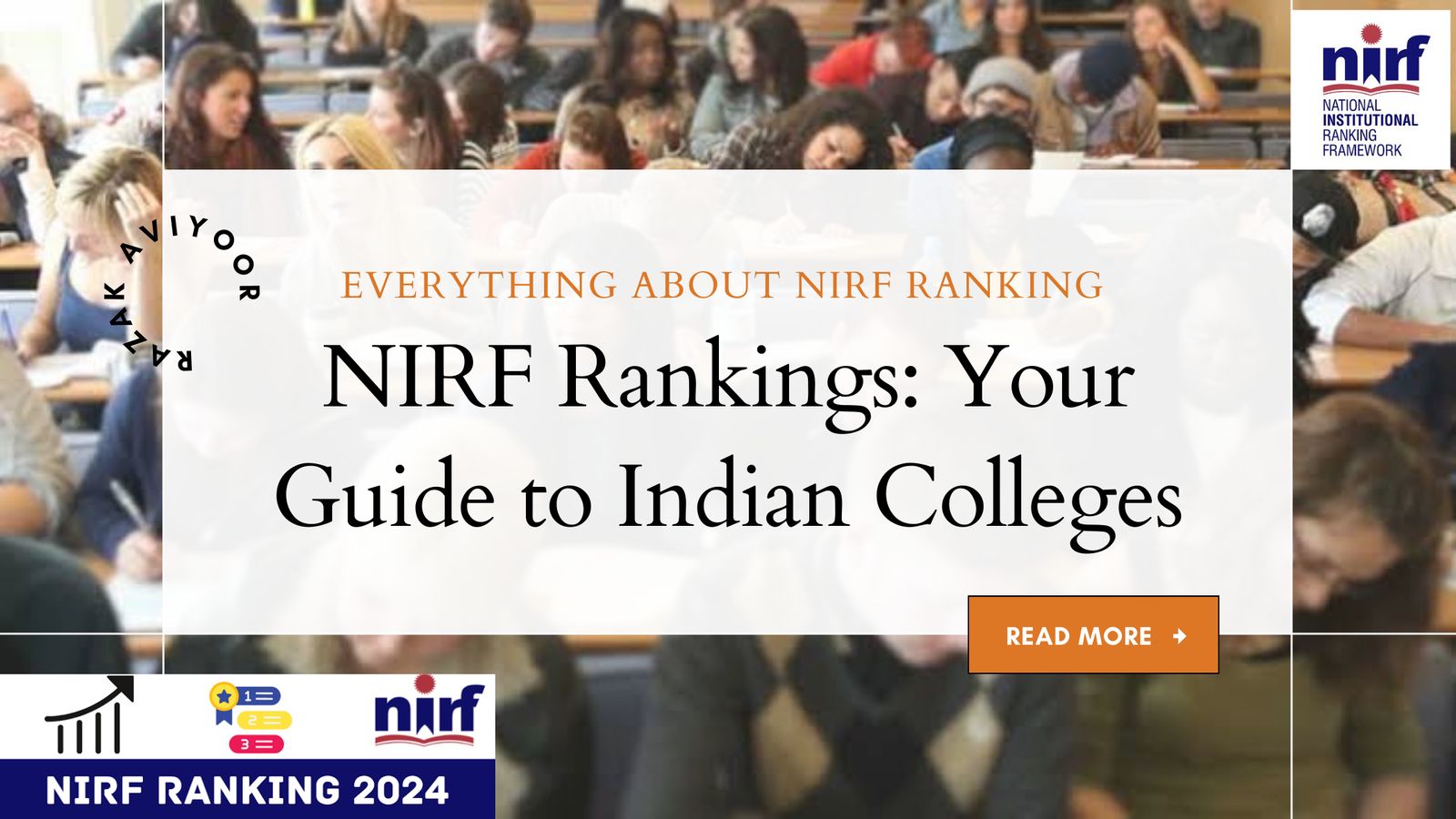Picking a college in India can be tough with so many choices. The National Institutional Ranking Framework (NIRF) makes it easier. It’s like a report card for colleges, showing how good they are. The government started NIRF in 2015 to help people understand which colleges are the best.
Why NIRF Matters
Fair and Open: NIRF uses the same rules to judge all colleges. This makes it easy to compare them fairly. Students, parents, and employers can trust these rankings.
Helps Colleges Improve: Colleges want good NIRF rankings, so they try to get better. This means they improve their teachers, research, and student services.
Good for Students:
Makes Choosing Easier: NIRF shows each college’s strengths and weaknesses. Students can see which colleges are best for what they want to study.
Better Job Chances: Top-ranked colleges often have better job placement programs. This means students have a better chance of getting good jobs after they graduate.
Well-Rounded Education: NIRF also looks at things like diversity and student support. This means colleges try to make their campuses good places for all students.
What NIRF Looks At
Teaching and Resources: This looks at the teachers, the number of students per teacher, and things like libraries and labs.
Research: This looks at how much research the college does and how it works with businesses.
Graduates: This looks at how many students finish their degrees and get jobs or go on to more school.
Outreach and Inclusivity: This looks at how the college helps students from all backgrounds and how it helps the community.
Reputation: This looks at what other colleges, employers, and the public think about the college.
What’s Next for NIRF
NIRF might start looking at more things in the future, like online learning and job training. Colleges are already using NIRF to improve, which is good for students.
In Short
NIRF rankings are a helpful tool for anyone trying to find the right college in India. They show how good a college is and help students make smart choices.
Frequently Asked Questions (FAQs)
1- What kinds of schools are ranked? NIRF ranks all kinds of colleges and universities in India.
2-How often are the rankings updated? Every year, usually around April or May.
3- Should I only look at NIRF rankings? No. NIRF is helpful, but you should also think about other things, like where the college is, how much it costs, and what programs they offer.
4-Can small or new colleges get good rankings? Yes! If they are good at teaching, research, and helping students, they can get a good rank.
5-How can I use NIRF rankings?
- Compare colleges in your field.
- See what each college is good at.
- See if a college is getting better over time.
5-Can colleges improve their ranking? Yes! Colleges can work on improving their teaching, research, and other things to get a better ranking.
6-Where can I find the rankings? Go to the official NIRF website (www.nirfindia.org).
7-Does NIRF rank specific departments within a college? No, NIRF ranks the institution as a whole, not individual departments. However, the data submitted by the institution reflects the overall performance, which includes the contributions of various departments.
8-How does NIRF ensure the data is accurate? NIRF uses various methods to verify the data submitted by institutions, including cross-checking with other sources and sometimes conducting audits.
9-What if a college chooses not to participate in NIRF? It’s up to the institution to participate. If a college doesn’t participate, it won’t receive a ranking. This doesn’t necessarily mean the college is bad, but it means there’s no NIRF data available for comparison.
In Simple Words:
NIRF helps you find a good college in India. It’s like a guide that shows you how well different colleges are doing. Use it along with other information to choose the best college for you.






